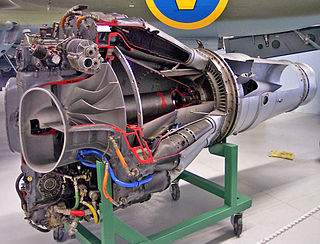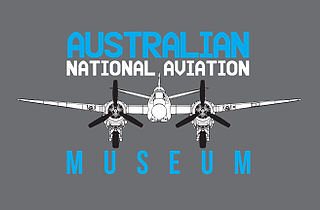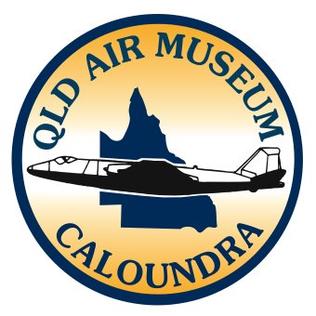This article needs additional citations for verification .(September 2017) |
The Australian Aviation Museum, is located on Starkie Drive, Bankstown Airport in the suburb of Bankstown.
This article needs additional citations for verification .(September 2017) |
The Australian Aviation Museum, is located on Starkie Drive, Bankstown Airport in the suburb of Bankstown.
The Museum was opened by the then Prime Minister the Hon. Paul Keating in 1994, and showcases the history and future of aviation, space technology and the progress in world aviation. [1] The Museum is now closed permanently.[ citation needed ]
The Australian Aviation Museum has on display a mock up Boeing 747-400 which is used as a Movie set. It has been used in films such as Mission: Impossible 2, the Lost (TV series), Foxtel's the Pam Ann Show and many other productions. The Movie Set has a detailed Cockpit with Galleys, First, Business and Economy Seats.
The Museum boasts the world's only Fawcett 120 which was manufactured at Bankstown, [2]

The de Havilland Aircraft Company Limited was a British aviation manufacturer established in late 1920 by Geoffrey de Havilland at Stag Lane Aerodrome Edgware on the outskirts of north London. Operations were later moved to Hatfield in Hertfordshire.

The de Havilland Vampire is a British jet fighter which was developed and manufactured by the de Havilland Aircraft Company. It was the second jet fighter to be operated by the RAF, after the Gloster Meteor, and the first to be powered by a single jet engine.

The de Havilland Canada DHC-1 Chipmunk is a tandem, two-seat, single-engined primary trainer aircraft designed and developed by Canadian aircraft manufacturer de Havilland Canada. It was developed shortly after the Second World War and sold in large numbers during the immediate post-war years, being typically employed as a replacement for the de Havilland Tiger Moth biplane.

The de Havilland DH.82 Tiger Moth is a 1930s British biplane designed by Geoffrey de Havilland and built by the de Havilland Aircraft Company. It was operated by the Royal Air Force (RAF) and other operators as a primary trainer aircraft. In addition to the type's principal use for ab initio training, the Second World War had RAF Tiger Moths operating in other capacities, including maritime surveillance and defensive anti-invasion preparations; some aircraft were even outfitted to function as armed light bombers.
de Havilland Aircraft Pty Ltd (DHA) was part of de Havilland, then became a separate company. It acquired the Commonwealth Aircraft Corporation in 1985 and was purchased by Boeing in 2000 and merged with the Boeing owned AeroSpace Technologies of Australia to become Hawker de Havilland Aerospace Pty Ltd. In 2009, the name was changed to Boeing Aerostructures Australia (BAA) and is a subsidiary of Boeing Australia Ltd.

A bush airplane is a general aviation aircraft used to provide both scheduled and unscheduled passenger and flight services to remote, undeveloped areas, such as the Canadian north or bush, Alaskan tundra, the African bush, or savanna, Amazon rainforest or the Australian Outback. They are used where ground transportation infrastructure is inadequate or does not exist.

The de Havilland Canada DHC-7, popularly known as the Dash 7, is a turboprop-powered regional airliner with short take-off and landing (STOL) performance. It first flew in 1975 and remained in production until 1988 when the parent company, de Havilland Canada, was purchased by Boeing in 1986 and later sold to Bombardier. In 2006 Bombardier sold the type certificate for the aircraft design to Victoria-based manufacturer Viking Air.

The de Havilland Goblin, originally designated as the Halford H-1, is an early turbojet engine designed by Frank Halford and built by de Havilland. The Goblin was the second British jet engine to fly, after Whittle's Power Jets W.1, and the first to pass a type test and receive a type certificate issued for an aircraft propulsion turbine.

Bankstown Airport is an airport and business park located in the City of Canterbury-Bankstown, approximately 26 km (16 mi) from the Sydney Central Business District (CBD), Australia and 17 km (11 mi) west of Sydney Airport. It is situated on 313 ha of land and has three parallel runways, several apron areas, a small passenger terminal and a business park, home to more than 160 businesses. The airport, is home to numerous fixed-wing and helicopter flying schools and also caters to charter and private business flights, freight, aeromedical services, recreational flights, aircraft maintenance businesses, private aircraft and emergency services. Bankstown Airport operates 24 hours a day, with limitations placed on night circuit training.

The Airco DH.4 is a British two-seat biplane day bomber of the First World War. It was designed by Geoffrey de Havilland for Airco, and was the first British two-seat light day-bomber capable of defending itself.

The de Havilland DH.60 Moth is a 1920s British two-seat touring and training aircraft that was developed into a series of aircraft by the de Havilland Aircraft Company.
The North East Land, Sea and Air Museums (NELSAM), formerly the North East Aircraft Museum, is a volunteer-run aviation museum situated on the site of the former RAF Usworth/Sunderland Airport, between Washington and Sunderland, in Tyne and Wear, England. The museum has the largest aviation collection between Yorkshire and Scotland and houses over 30 aircraft and a wide collection of aero engines. The museum also has a small collection of other items such as weaponry, vehicles and other historical exhibits.

The DH.83 Fox Moth was a successful small biplane passenger aircraft from the 1930s powered by a single de Havilland Gipsy Major I inline inverted engine, manufactured by the de Havilland Aircraft Company.

The de Havilland Australia DHA-3 Drover is a small transport aircraft that was built by de Havilland Australia (DHA) in the 1940s and 1950s. The aircraft had some similarities with the two-engine British-built de Havilland Dove but used a trimotor configuration.

The de Havilland DH.94 Moth Minor was a 1930s British two-seat tourer/trainer aircraft built by de Havilland at Hatfield Aerodrome, England. With the start of the second world war production of the Moth Minor was moved to de Havilland Australia at Bankstown Aerodrome, Australia.

The Chrislea Super Ace is a 1940s British four-seat light aircraft built by Chrislea Aircraft Limited.

The Moorabbin Air Museum is an aviation museum at Moorabbin Airport in Melbourne, Victoria, Australia. It was founded in 1962 as the Australian Aircraft Restoration Group, in an attempt to maintain a World War II-era Bristol Beaufighter aircraft. It has since become a museum, with a large aircraft collection. It was known as the Australian National Aviation Museum up until October 2021. As of 2021 it held nearly 60 aircraft and 25 engines.

The Aviation Heritage Museum is a museum created and maintained by the RAAF Association of Western Australia. It houses many military and civilian aircraft, aircraft replicas and aircraft engines, of types that have served in the Royal Australian Air Force or have relevance to aviation in Western Australia. It is located in the suburb of Bull Creek in Perth, Western Australia.

The Queensland Air Museum is a not-for-profit community-owned aviation museum located at Caloundra Airport in Queensland, Australia. Its mission is to collect and preserve all aspects of aviation heritage with an emphasis on Australia and Queensland. The museum has the largest collection of historical aircraft in Queensland and it also has a large collection of aircraft engines, equipment, artefacts, photographs and books.
The Darwin Aviation Museum, previously known as the Australian Aviation Heritage Centre, displays aircraft and aircraft engines of relevance to the Northern Territory and aviation in Australia generally. It is located in Darwin suburb of Winnellie.
Coordinates: 33°55′35″S150°58′52″E / 33.926485°S 150.981049°E